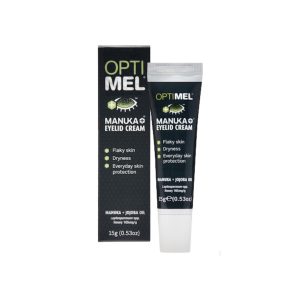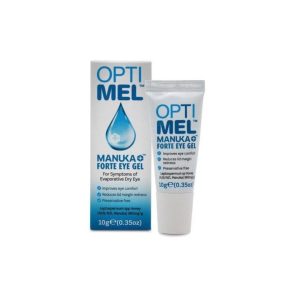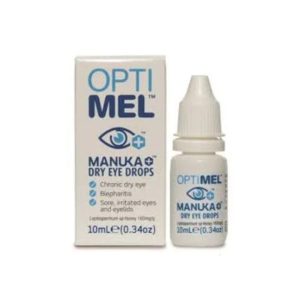Are you suffering from ongoing dryness, irritation, or discomfort in your eyes that seems persistent and unyielding? If you answer yes, then you could be among the numerous individuals facing a chronic dry eye condition potentially linked to Demodex mites. These tiny, eight-legged creatures are a natural component of the human skin biome, particularly flourishing in the sensitive areas surrounding the eyes and eyelids. When their numbers grow excessively, they can trigger inflammation, exacerbating the symptoms associated with dry eye syndrome and leading to significant discomfort and distress.
If you have been grappling with unexplained dry eye issues for an extended period, it’s essential to investigate whether Demodex mites might be a pivotal factor contributing to your discomfort. This detailed guide will assist you in recognizing the signs of a Demodex infestation, clarify the complex connection between these mites and dry eye disease, and introduce effective treatment options designed to manage their population and significantly alleviate your discomfort.

Identify and Understand the Symptoms of Demodex Blepharitis
Individuals suffering from Demodex Blepharitis or a significant infestation of these mites typically endure a variety of distinct symptoms. The common manifestations associated with this condition can include:
- Burning, stinging, or gritty sensations in the eyes, especially noticeable towards the end of the day when fatigue sets in.
- Unexplained excessive tearing or watery eyes that arise independently of allergies or environmental triggers.
- Red, inflamed eyelids, alongside irritation affecting the skin surrounding the eyes.
- Crusty, dandruff-like debris along the lashes and lid margins, often appearing as collarettes.
- Heightened sensitivity to light, resulting in a persistent feeling of needing to squint.
- Episodes of fluctuating blurred vision throughout the day, causing further concern.
Many individuals endure these dry eye symptoms for years without recognizing that a Demodex mite infestation could be a significant underlying cause. Identifying these symptoms is a crucial step toward effectively addressing the root issue and seeking appropriate treatment.

Uncover the Mechanisms of How Demodex Mites Trigger Dry Eye Symptoms
Are you interested in understanding how these minuscule organisms can cause such distressing dry eye symptoms? Demodex mites flourish on the oils and cells present on the skin, predominantly in the hair follicles of your eyelashes. As they consume these resources, they produce waste products, lay eggs, and leave behind remains of deceased mites, which accumulate along the eyelid margins. This buildup forms a thick layer of debris and a bacterial biofilm that can obstruct the delicate oil glands necessary for maintaining optimal eye health.
When these oil glands become blocked and fail to release adequate oils, it results in the rapid development of dry patches on the eye’s surface. This oily tear film is crucial for preventing the quick evaporation of the watery tears that keep our eyes moist and comfortable. The inflammation triggered by this blockage can exacerbate eye irritation, redness, and the uncomfortable gritty sensation typically associated with dry eye conditions.
Gain Insight into the Life Cycle of Demodex Mites for Treatment Success
Understanding the life cycle of Demodex mites is essential for implementing effective treatment strategies. These mites undergo distinct developmental stages: egg, larva, nymph, and adult, with a life cycle lasting approximately 14 to 21 days. They are most active during the nighttime hours, emerging from their hair follicles to mate and lay new eggs on the skin’s surface.
This nocturnal behavior indicates that the optimal time to apply Demodex treatments is during the evening, just before bedtime. By targeting the mites when they are most active, you can significantly enhance the effectiveness of your treatment regimen. However, due to their rapid reproductive capabilities, any remaining mites can quickly repopulate, making it essential to maintain continuous treatment over several weeks or even months to achieve lasting relief from symptoms.
Explore Proven Strategies for Managing Demodex-Induced Dry Eye Issues
If your optometrist confirms a high count of Demodex mites through eyelash sampling or microscopic examination, they may suggest various treatment options to combat the infestation:
1. Leverage Tea Tree Oil Eyelid Wipes and Scrubs for Effective Relief
Products that contain tea tree oil showcase powerful antimicrobial and antiparasitic properties, making them exceptionally effective in eradicating mites. These formulations can effectively remove surface mites, dismantle collarettes produced by these pests, and assist in exposing buried mites, rendering them more susceptible to treatment.
While tea tree oil proves effective against mites, it may cause stinging upon application and can be cytotoxic to healthy cells, potentially aggravating and worsening symptoms for some patients. Routine application of tea tree oil eyelid wipes or scrubs before bedtime can gradually diminish the mite population. A notable example of a potent tea tree oil treatment is OcuSoft Oust Foam, which is particularly efficient for managing blepharitis primarily driven by Demodex mites.
2. Utilize Gentle Hypochlorous Acid Lid Hygiene Sprays for Safe Use
Hypochlorous acid is a naturally occurring substance produced by our immune system and acts as an effective antimicrobial agent. It is gentle on the eyes, does not induce stinging, and is safe for our cells.
Disinfecting lid sprays and cleansing foams containing hypochlorous acid not only eradicate mites but also help reduce inflammation, providing relief from symptoms. Applying these solutions to the lash lines before bed can effectively eliminate mites and their debris. Many of these products have a distinct odor reminiscent of chlorinated swimming pools. Popular hypochlorous acid-based solutions include Ocusoft Hypochlor Spray and Avenova.
Among these options, Ocusoft Hypochlor Foam is often recommended due to its superior value and extended shelf life after opening, making it a practical choice for ongoing management and treatment.
3. Discover the Benefits of Manuka Honey Solutions for Eye Care
Recent studies suggest that Manuka Honey solutions may be as effective as 50% tea tree oil against Demodex, although further research is needed to fully validate these claims. While it may cause a slight sting upon application, Manuka Honey is generally less irritating than tea tree oil and demonstrates excellent efficacy against other types of blepharitis. It is non-cytotoxic and less likely to trigger inflammation in the eyelids.
Many patients report that any initial sting is well worth it, as they typically experience significant relief afterward. Manuka Honey solutions are available in gel form (such as Optimel Forte, which is more effective but may sting more) and as drops (like Optimel Drops, which are easier to apply and sting less).
4. Address Severe Demodex Infestations with Oral Anti-Parasitics
In scenarios where Demodex overpopulation is particularly severe and persistent, healthcare professionals may choose to prescribe oral antiparasitic medications. For instance, formulations such as Ivermectin in pill form have shown effectiveness in managing these infestations. Moreover, weekly doses of oral tea tree oil supplements taken over several months can help maintain mite levels in check and provide longer-lasting relief from the distressing symptoms associated with this condition.
5. Pursue Advanced Professional Treatments for Effective Demodex Management
Certain eye clinics offer intensive in-office treatments specifically tailored for Demodex management, utilizing specialized products like Oust Demodex Cleanser Swabstix or a handheld electric device known as BlephEx.
The Oust Demodex Cleanser Swabstix delivers targeted treatment solutions that can significantly help reduce the effects of these troublesome mites, assisting you in regaining comfort and improving your overall eye health.
The Article: Demodex Mites Linked to Chronic Dry Eye Issues first appeared on https://writebuff.com.
The Article Demodex Mites and Their Connection to Chronic Dry Eye Was Found On https://limitsofstrategy.com
The Article Demodex Mites: Link to Chronic Dry Eye Explained First Appeared ON
: https://ad4sc.com



Comments are closed